Yet another wet and drizzly Sunday: the rain does seem to be seeking us out this year. Off to Eastham to check if the signposted bluebell wood lived up to its promise.
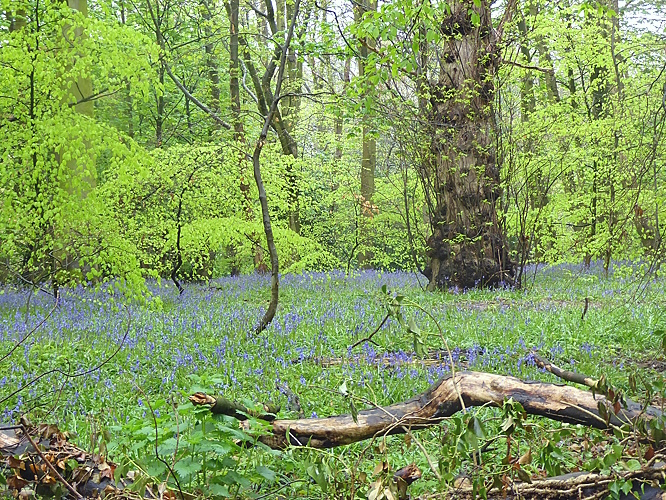
It did indeed, with large areas carpeted with the rarer native English Bluebells. They are an indicator species for ancient woodlands, which suggests Eastham wood has been undisturbed for at least 400 years. Half the world’s bluebells are found in the UK, and the English species can be distinguished by having their flowers just on one side, a nodding stem, curled-back petals, white or cream pollen and a sweet smell.
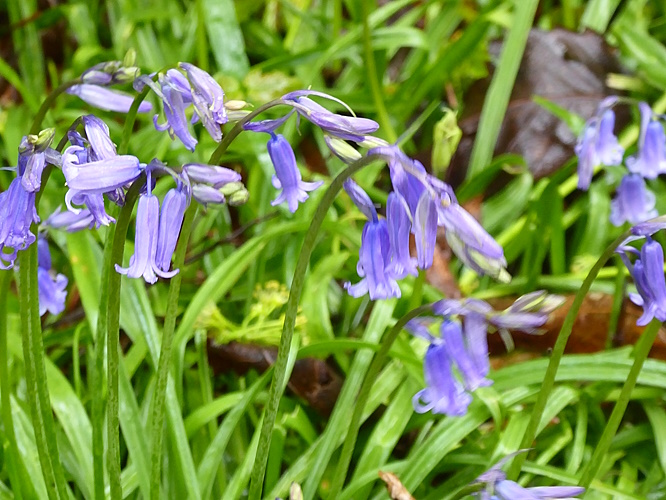
The bluebells in most gardens, including mine, are from Spain or Portugal, and have been imported for centuries, preferred because they were bigger and more upright. In a familiar sequence of events the Spanish bluebells have been out-competing and hybridising with our native bluebells. You will know the interloper by its tall straight stems, flowers all around, blue pollen and absence of scent. There were a few clumps of them near the path edges, but the depths of the wood seemed to have the proper English Bluebells throughout.
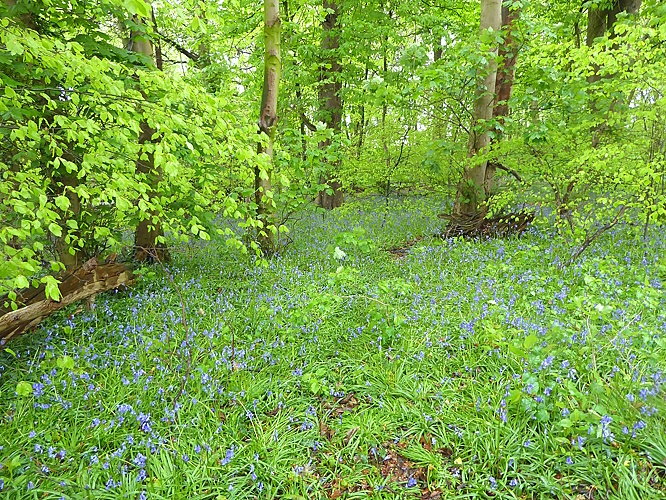
All was green and growing, with that lovely fresh colour of spring. Lots of Garlic Mustard was flowering beside the paths and the Cow Parsley was just starting to bloom. The Hawthorn or “May” blossom was just coming out.
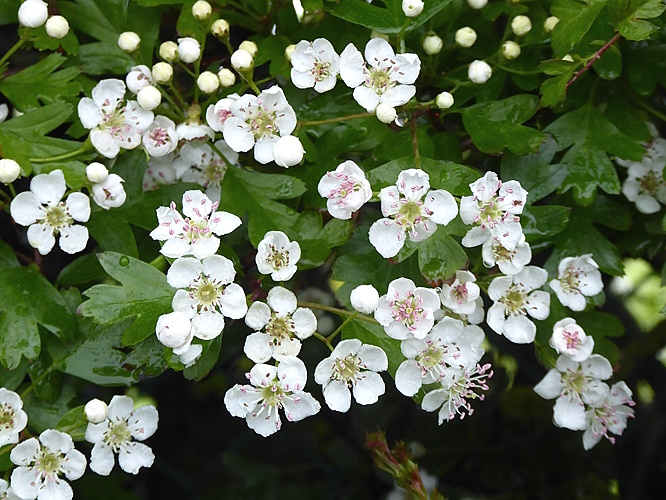
Another plant near the edge was Yellow Archangel with variegated leaves. This is a garden escape and the Wildlife Trusts say it is an invasive plant and should be removed from wild areas. We also spotted a few patches of Wood Anemone and a couple of clusters of Three-cornered Leek.
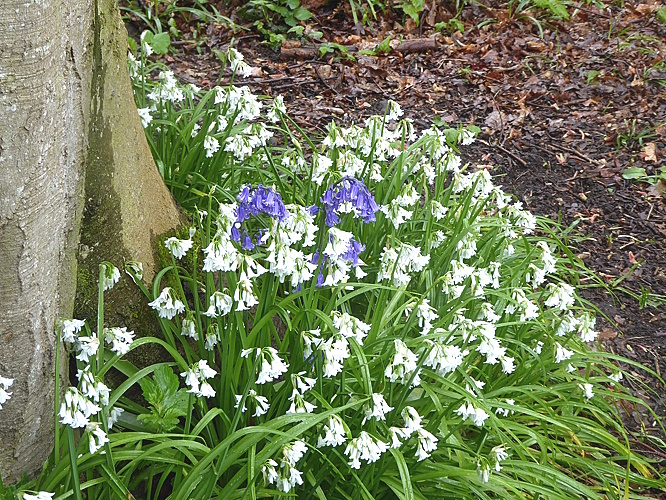
A fenced-off area was reserved for wildflower and (hazel) coppice restoration, and a single yellow flower was visible. Buttercup? Some kind of Poppy? No, it was Greater Celandine, a member of the Poppy family, and no relation to the Lesser Celandine. It is thought to have been introduced to Britain by the Romans as a medicinal herb – its orange sap was used to treat warts.
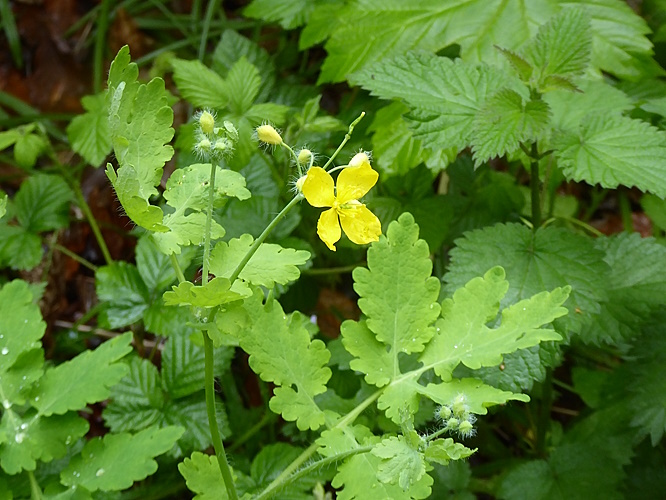
Robins were singing everywhere. We saw both Song Thrush and Blackbirds on the path and heard the call of a Nuthatch, but we couldn’t see it. As we approached the Ranger Station we were shocked to see the yard gates closed and locked. We had been relying on using their loos. Happily the biker’s pub next door, The Tap, was happy to accommodate us. It looks like Eastham is another place we will have to delete from our list of suitable places to go on a Sunday.
There were no dry places to have lunch, but we found a Holly den which had suitable logs for seats but was a bit drippy!
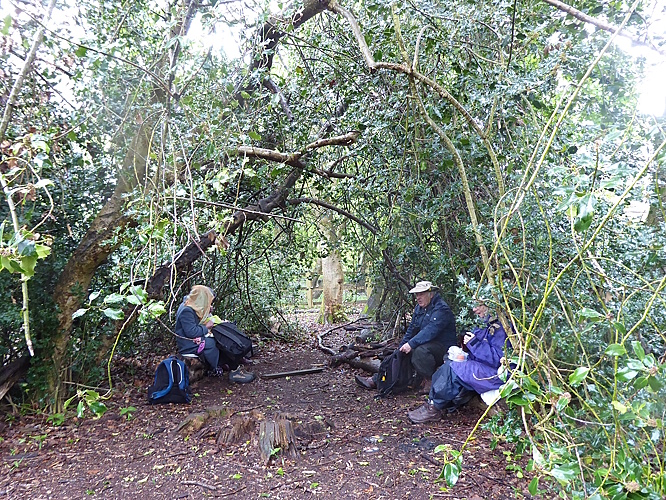
As soon as we had finished eating, the rain stopped. It’s always the way. As we walked back out to the road we noticed logs and woodpiles everywhere. It’s the aftermath of storms Arwen and Barra in December 2021, when dozens of trees fell or snapped. I think there’s now a massive experiment going on. None of that old wood has been removed, it’s all being left as logs, branches, brash piles and woodchip to see what happens as it rots.
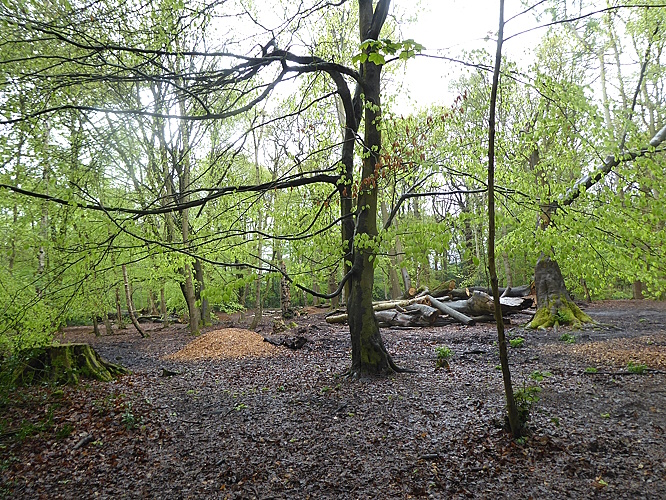
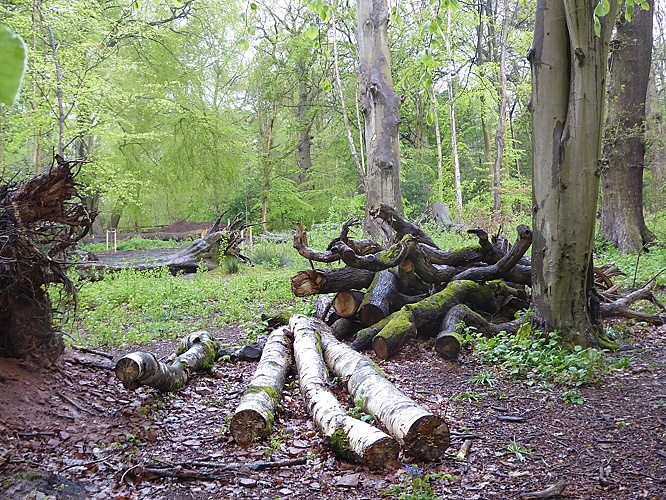
Public transport details: Bus 1 from Sir Thomas Street at 10.05, arriving New Chester Road opp Woodyear Road at 10.45. Returned on the X1 from New Chester Road / Allport Road at 1.55, arriving Liverpool at 2.30.
